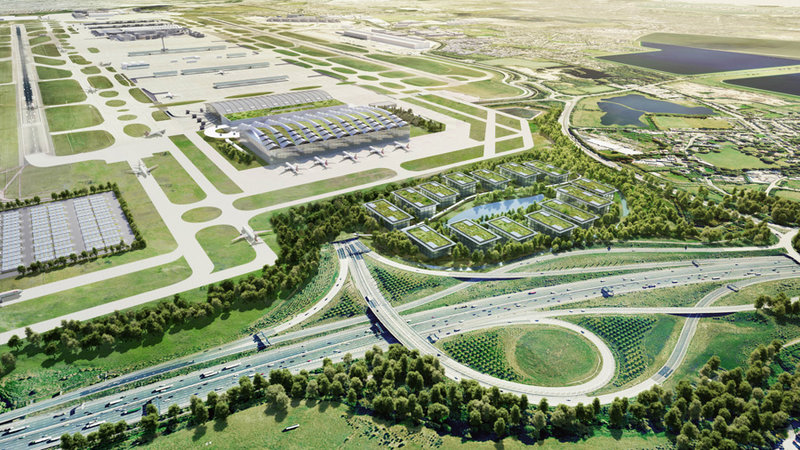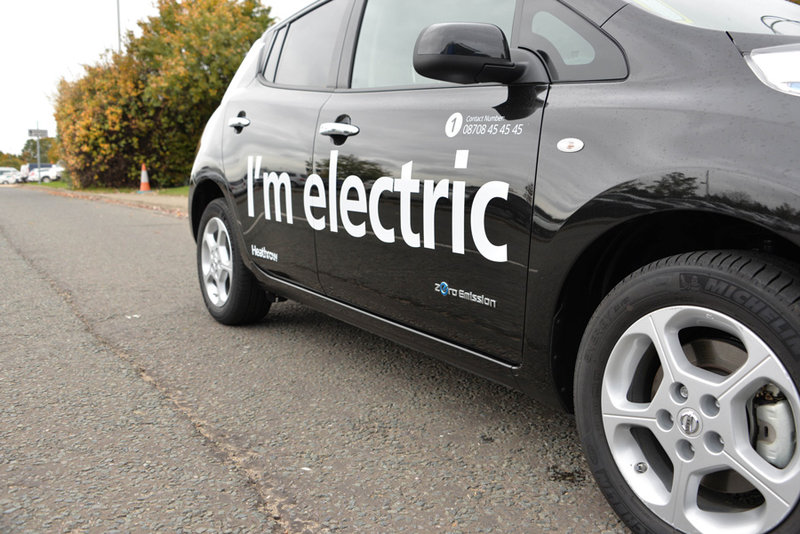Environment
Heathrow’s environmental mitigation: does the strategy hold up?
After a controversial national debate, Heathrow Airport has received backing for its third runway project. The airport has gone to great lengths to prove it is embarking on a journey to sustainable growth, but is its environmental strategy convincing enough? Eva Grey reports
A
decision more than half a century in the making, Heathrow Airport’s third runway expansion finally received the green light with a majority of 296 votes in the British parliament on 25 June.
Speaking before Parliament, UK Transport Secretary Chris Grayling said that although the decision was never going to be easy, it was taken “in the national interest and based on detailed evidence”.
Greenlighting Heathrow’s expansion was certainly a historic moment, and came after years of debates and clashes with environmental campaigners and the local community over the project’s impact on worsening air quality in the capital, where nearly 9,500 people die prematurely each year because of air pollution. What furthers the controversy is that, after all this time, the decision was made without a clear indication of the costs, timescale and a robust environmental impact statement.
The recently published Airports National Policy Statement (NPS), which sets out the final proposals to back Heathrow’s expansion, concludes that when it comes to sustainability, “there will be inevitable harm caused by a new Northwest Runway” in relation to overall quality of life, irreplaceable destruction of community land, dangerous pollutant emissions, and loss to biodiversity. Nevertheless, it insists that “the need for such a scheme outweighs such harm”.
On its part, Heathrow has been dedicated to pre-empt criticism as much as possible, and in February last year it launched Heathrow 2.0, a comprehensive business plan for sustainable growth. One year in, the airport published a follow-up progress report, sharing its achievements and goals, but also its shortcomings, in pursuit of operating a sustainable airport.
All images courtesy of Heathrow Airport
Worsening air pollution
On the day of the vote, the Department for Transport (DfT) published an explanatory note that said Heathrow would not get the go-ahead unless the scheme can meet legal obligations on air quality. Based on an air quality analysis published in October 2017, the government believes this is achievable.
The third runway will make possible an additional 260,000 flights, bringing the total figure to at least 740,000 flights departing and arriving each year. This will make the airport the UK’s largest source of carbon emissions. The final decision to allow the expansion has spurred further controversy across the board; co-leader of the Green Party of England and Wales Caroline Lucas branded it “unforgivable”, while the London Assembly called it a “calamitous decision”.

Image courtesy of
The government itself acknowledges that Heathrow’s expansion would increase air pollution both in the construction and operation of the new runway.
Findings from an Appraisal of Sustainability (AoS), published alongside the NPS on 5 June, show that an estimated 121,340 people will experience a rise in annual mean NO2 levels when the scheme is delivered, with the report stating that “several thousand local residents as well as other sensitive receptors [will be] exposed to worsening air quality”.
The government itself acknowledges that Heathrow’s expansion would increase air pollution both in the construction and operation of the new runway
Mitigation measures ‘beyond our direct control’
Heathrow’s package of mitigation measures is expected to do little more than scratch the surface of the problem.
Originally launched last February, Heathrow 2.0 was presented as a landmark strategy “setting the direction for a future era of sustainable aviation”. One year in, Heathrow published a progress update, revealing its past, current and future efforts to mitigate the airport’s impact on air quality and the wider environment, particularly in light of a new runway. Indeed, on the day of the vote, the DfT reiterated that Heathrow is required to consider an extensive range of measures to mitigate the air quality impacts of the scheme.
However, when it comes to the airport’s owner and operator, Heathrow Airport Holdings Limited (HAL), the actions it can take to curb emissions are limited, and can loosely be placed into three categories: those that HAL can control; those it can guide; and those it can influence.
One of the areas that HAL has direct control over is airport energy use, where it has a clear goal to cut CO2 emissions from fixed assets by 34% by 2020, compared to 1990 levels. Since April 2017, Heathrow has been powered with 100% renewable electricity and has since revised its goal to becoming a carbon neutral airport by 2020.
It also has the highest density of electric vehicle charging infrastructure in Europe, while a partnership with Jaguar Land Rover and travel services company WeKnowGroup aims to roll out 200 electric vehicles over the next 12 months for passenger travel to and from the airport.

Image courtesy of
When it comes to its wider impact, HAL can only guide its airlines on some key local issues, such as aircraft noise and flight hours, while its influence reverberates throughout the wider aviation industry through open discussions, partnerships and development programmes.
However, in reality it’s aircraft that are the major source of carbon emissions. Aviation makes up over 90% of the total carbon emissions associated with the new runway over the 60-year appraisal period, according to a carbon assessment compiled for the Airports Commission in 2015.
Heathrow has little influence over these aspects, a fact that HAL itself admits in its progress report, stating that “in many areas, being successful in achieving our goals is beyond our direct control.”
One of its main missed targets between 2017 and 2018 was the fact that currently 5.24% of flights at Heathrow are by aircraft in the highest emissions category, known as the pre-CAEP (Committee on Aviation Environmental Protection) standard, exceeding the 3.7% target that HAL set for that year. The composition of some airline fleets means that not all these aircraft are due to be retired until after 2020.
Commenting ahead of the decision, Cait Hewitt, deputy director for the Aviation Environment Federation said: “On air quality, the scale of the problem means that any measures that Heathrow may be proposing will be pretty much irrelevant.”
Indeed, the government’s own AoS states that even though mitigation measures are predicted (based on a number of assumptions) to have the potential to reduce concentrations of pollutants, it also clearly warns that “the mitigation measures will have greatest effect in the immediate vicinity of the airport whilst the primary air quality impact of the scheme relates to worsened exceedances of the EU Directive limit values in central London.”
As a result of the uncertainty surrounding the future success of government schemes to reduce pollution, the report concludes that the “residual effect is assessed as significant negative”.
One of the areas that HAL has direct control over is airport energy use, where it has a clear goal to cut CO2 emissions from fixed assets by 34% by 2020
An economically-driven decision
When it comes to offsetting the vast majority of its impacts, both the government and Heathrow officials are banking on technology and measures that are not yet in circulation, as the airport's chief executive John Holland-Kaye writes in the report: “Heathrow 2.0 is an ambitious plan. We expected to stretch ourselves and in some areas to take a leap of faith. We know that some of the solutions that we’ll need do not exist yet.”
The airport aims to trial 25 sustainable innovations by 2025 in pilot schemes, and is currently involved in a sustainability audit in collaboration with Brunel University.
But it isn’t all just up to Heathrow; when it comes to air quality changes in central London, it is also down to measures undertaken by local and national government, as part of its 2017 air quality plan.
However, as critics point out, Heathrow’s new runway will turn the airport into the UK’s biggest polluter. The decision to push forward with an expansion – despite repeated warnings over loss of biodiversity, increase in noise levels, dangerous and potentially illegal levels of air quality deterioration – has been purely economically-motivated.
In a statement ahead of the Parliament vote, the Confederation of British Industry, which speaks on behalf of 190,000 UK businesses, said: “New air routes from Heathrow will unlock billions of pounds in growth, create tens of thousands of jobs in all corners of the UK and enable entrepreneurs to export to the booming growth markets of the world.”

Image courtesy of
Lucas’ warnings, which urged MPs “to unshackle themselves from the interests of the big business lobby and those who peddle overblown hype on job creation”, went unheard.
The decision, however, will not go unchallenged. Shortly after the news of the vote, four local authorities affected by the airport expansion – Wandsworth, Richmond, Hillingdon and Hammersmith and Fulham – together with Greenpeace and Mayor of London Sadiq Khan, vouched to launch a judicial review against the plans.
A more formal and final Environmental Impact Statement is also still expected, which will reveal any “potentially significant environmental effects”, along with a new cohort of specific mitigation proposals. This will be part of the final application for construction, and will use “much of the information” within the AoS, as well as data obtained from further consultation, data collection and baseline surveys.
New air routes from Heathrow will unlock billions of pounds in growth, create tens of thousands of jobs in all corners of the UK